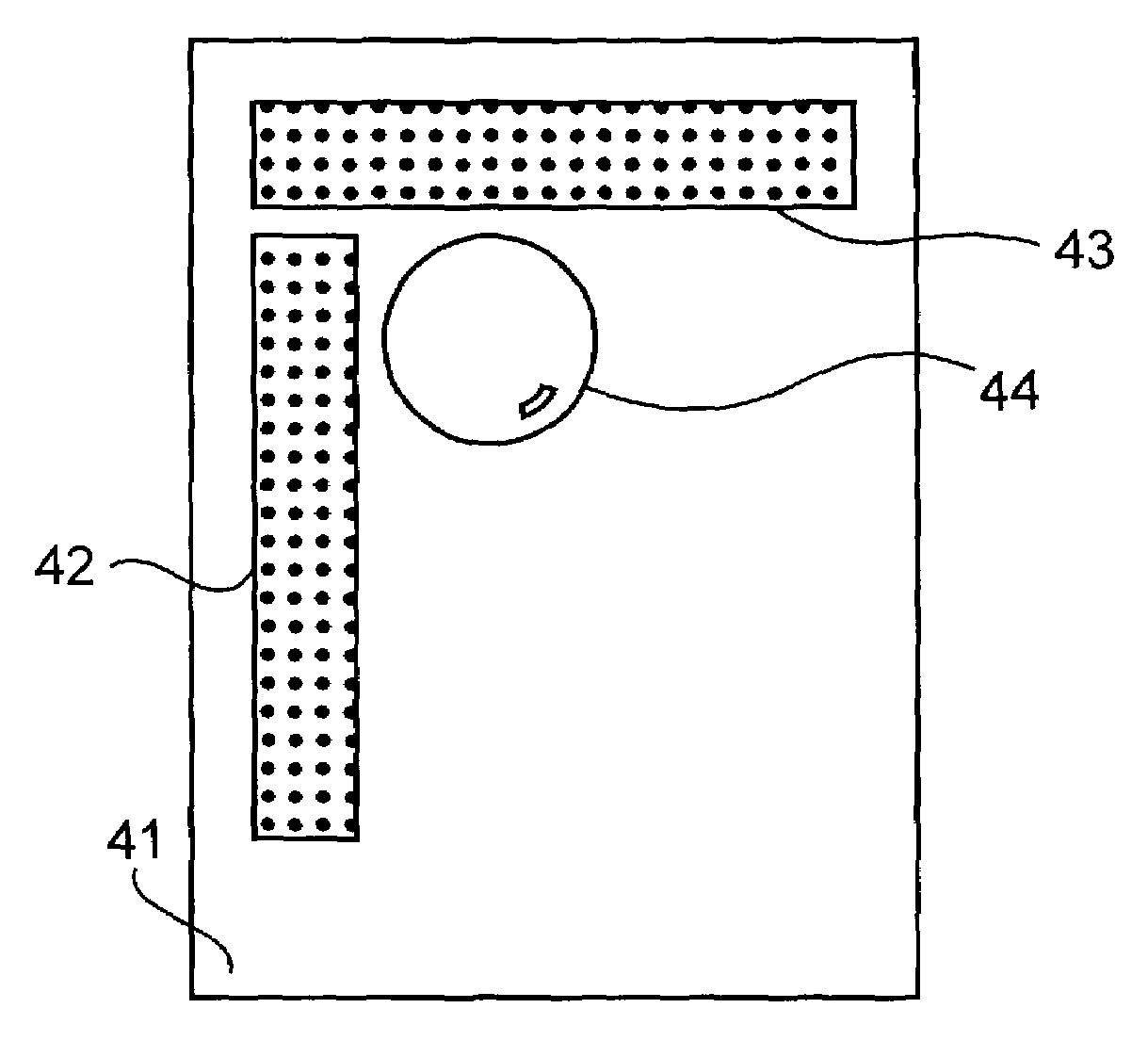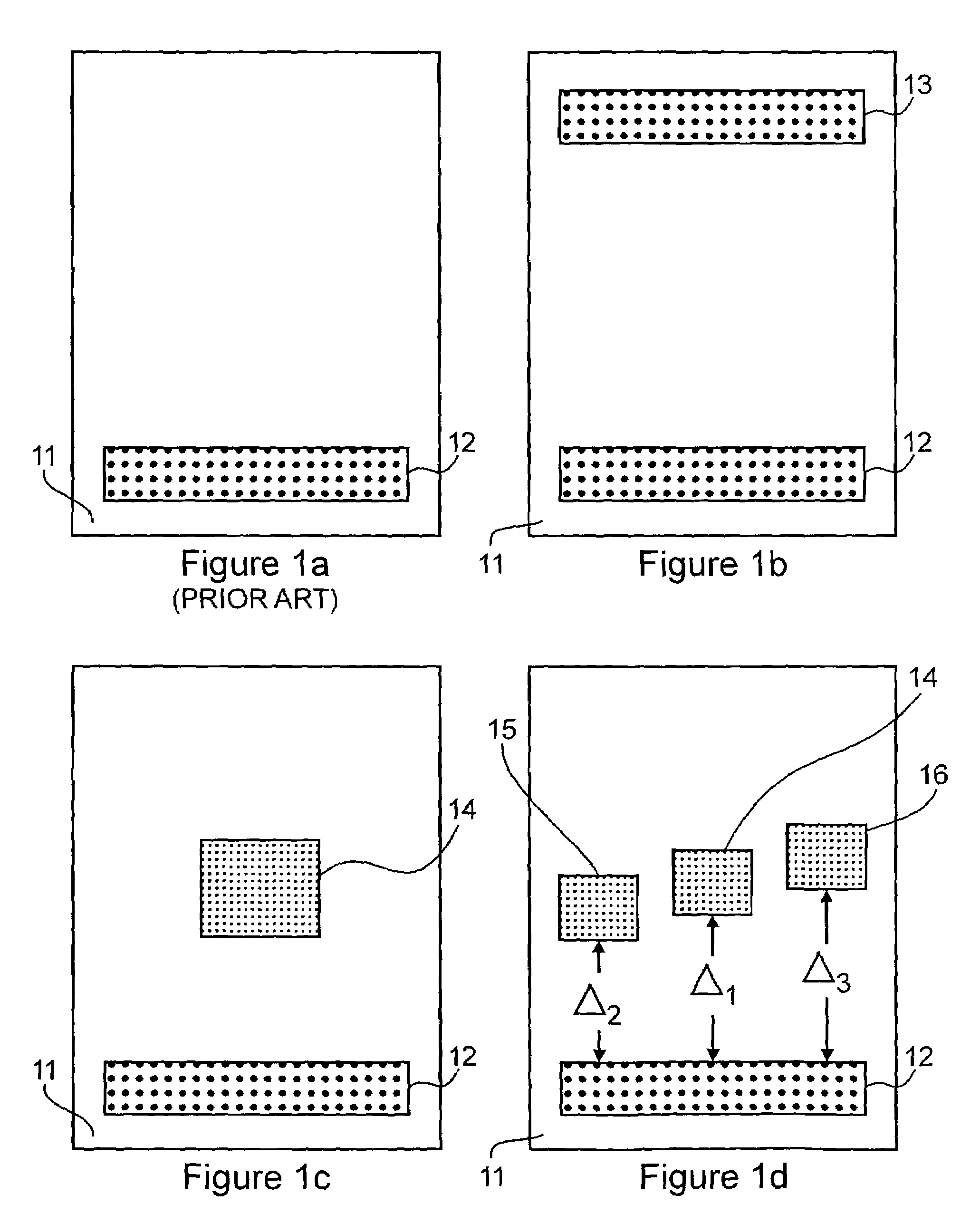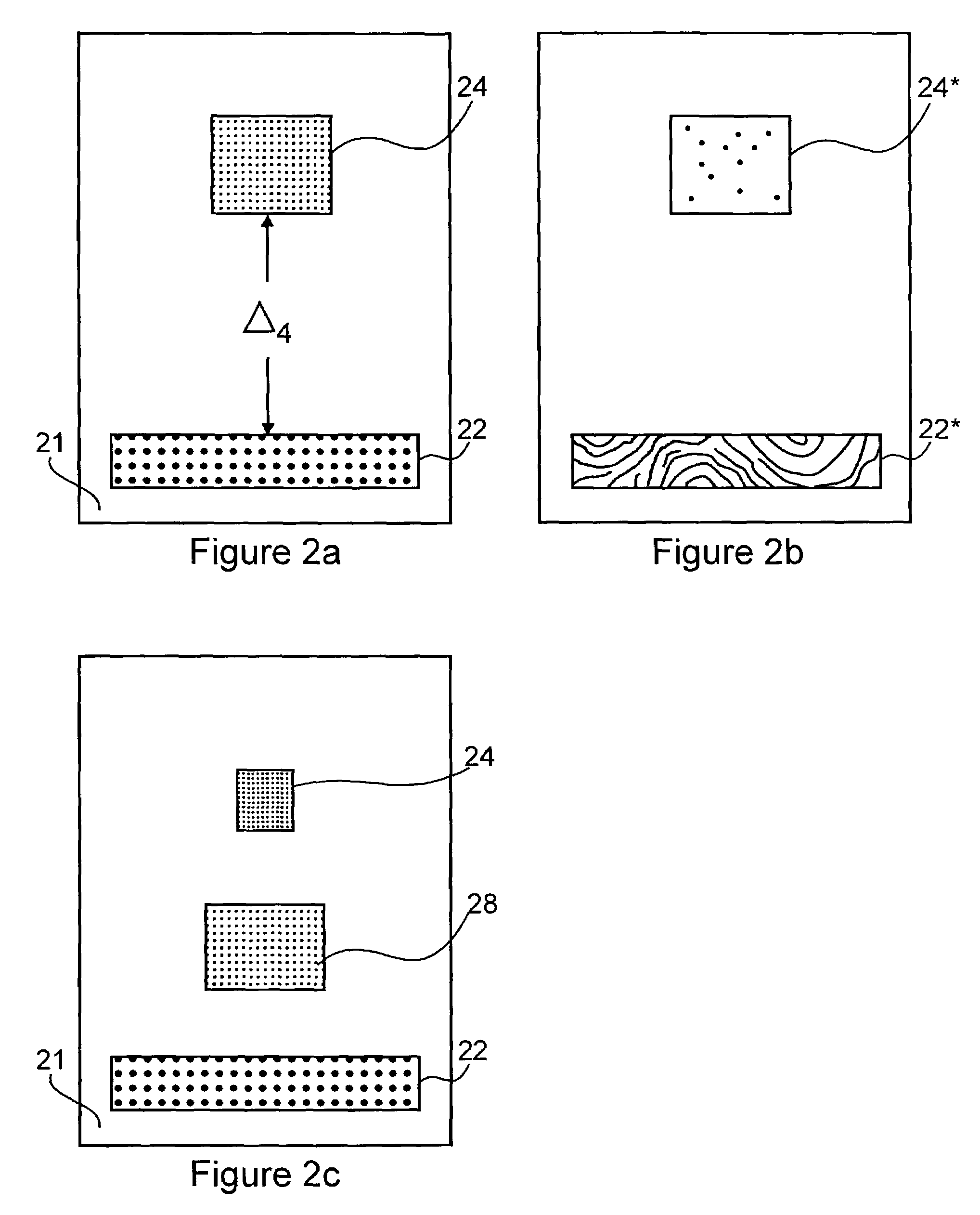Swipe imager with multiple sensing arrays
- Summary
- Abstract
- Description
- Claims
- Application Information
AI Technical Summary
Benefits of technology
Problems solved by technology
Method used
Image
Examples
second embodiment
[0048]In FIG. 1c, a simplified block diagram of an imaging device according to the present invention is shown. The sensing pad 11 comprises two linear capacitive sensing arrays 12 and 14, which now have a different number of sensing elements. In this example, the linear capacitive sensing array 12 comprises 10 rows and 200 columns, whereas the linear capacitive sensing array 14 comprises 20 rows and 20 columns. Preferably, the linear sensing array 12 has a first resolution, and the linear sensing array 14 has a same resolution. Alternatively, the linear sensing array 12 has a first resolution, and the linear sensing array 14 has a second, other resolution. The same interleaving functionality as described for the imaging device of FIG. 1b is also performed by the device described in FIG. 1c. Here the larger images are interleaved with the help of the small images offset therefrom by other than an integer multiple of a line spacing, which allows for more accurate alignment of images. ...
third embodiment
[0049]In FIG. 1d, a simplified block diagram of an imaging device according to the present invention is illustrated. The sensing pad 11 comprises a linear capacitive sensing array 12 and three small capacitive sensing arrays 14, 15 and 16. In this example, the linear capacitive sensing array comprises 10 rows and 200 columns, whereas each of the small linear capacitive sensing arrays comprises 20 rows and 20 columns. The first small linear capacitive sensing array 14 is spaced apart from the linear capacitive sensing array by a distance Δ1=(N+½)·δ1. Again, δ1 stands for the row spacing of the linear capacitive sensing device 12, and N is an integer. The second small linear capacitive sensing array 15 is spaced apart form the capacitive sensing array 12 by a distance Δ2=(N+¼)·δ1, whereas the third small linear capacitive sensing array 16 is spaced apart by a distance Δ3=(N+¾)·δ1. This way, through interleaving of the series of partial images retrieved by the imaging device, a four-fo...
tenth embodiment
[0065]the present invention is now described with reference to FIG. 4. The sensing pad 41 comprises a first longitudinal linear capacitive sensing array 42 having 10 rows and 200 columns, and a second latitudinal linear capacitive sensing array 43 comprises 200 rows and 10 columns. The array 43 is arranged in a way that its rows are parallel to the rows of array 42, and the array 43 is aligned at one of the edges of the array 42. Thus, the two sensing arrays are arranged to substantially form a right angle. In this modification, a motion sensor in form of a track ball 44 is added to the overall system. The trackball 44 is connected to a processor for processing the motion data provided from the motion sensor. The motion sensor reduces an amount of redundant information that the sensing pad 41 captures, provides additional information for image construction, and allows for sensing of a moving surface regardless of direction or type of motion. Thus, for example, the linear capacitive ...
PUM
 Login to View More
Login to View More Abstract
Description
Claims
Application Information
 Login to View More
Login to View More - R&D
- Intellectual Property
- Life Sciences
- Materials
- Tech Scout
- Unparalleled Data Quality
- Higher Quality Content
- 60% Fewer Hallucinations
Browse by: Latest US Patents, China's latest patents, Technical Efficacy Thesaurus, Application Domain, Technology Topic, Popular Technical Reports.
© 2025 PatSnap. All rights reserved.Legal|Privacy policy|Modern Slavery Act Transparency Statement|Sitemap|About US| Contact US: help@patsnap.com



